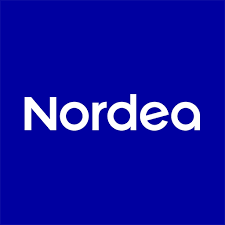
Sign In
OR continue with e-mail and password
E-mail address
Password
Don't have an account?
Create an Account
Reset password
Join Canary Wharfian
OR continue with e-mail and password
E-mail address
Username
Password
Confirm Password
How did you hear about us?
By signing up, you agree to our Terms & Conditions and Privacy Policy.

Company Overview
Company Reviews (0)
Interviews/Assessment Centres (0)
Salaries (0)
Jobs (0)
About Scotiabank
Recent History
In the past two years, Scotiabank, officially known as the Bank of Nova Scotia, has undergone significant changes that have shaped its strategic direction. One of the most notable developments is its ongoing efficiency drive, which included a workforce reduction in 2023 of approximately 3% of its global staff—around 2,700 positions—and further job cuts in its Canadian banking operations reported in October 2025, as part of a broader overhaul to boost profitability. Additionally, the bank announced a projected net income gain of approximately C$74 million for Q4 2025 from its investment in KeyCorp, reflecting a strategic move to strengthen its financial position through key partnerships, as noted in a recent financial update. These events highlight Scotiabank’s focus on cost management while seeking growth through targeted investments. This restructuring has sparked discussions about the bank’s long-term stability and its ability to balance efficiency with employee morale. For young professionals, these developments signal a firm in transition, potentially offering both challenges and opportunities within a changing corporate culture.
Introduction
Scotiabank, headquartered in Toronto, Canada, is one of the country’s "Big Five" banks and a major international financial institution with a presence in over 50 countries, particularly strong in Latin America and the Caribbean. Established in 1832, it serves millions of clients through personal and commercial banking, wealth management, and investment banking services, employing over 90,000 people globally as of recent figures. Currently, Scotiabank positions itself as a client-focused bank with a vision to be the most trusted financial partner, as outlined in its investor relations overview. Its market capitalisation places it among the largest banks in Canada, and it reported strong revenue growth in its Q3 2025 earnings, according to a recent earnings report. For university students and graduates eyeing a career in finance, Scotiabank represents a blend of traditional banking with an international footprint, offering exposure to diverse markets. It’s a firm where one can build a career in a globally recognised institution while navigating the complexities of a competitive sector.
Strengths
Scotiabank’s key competitive advantages lie in its strong international presence and diversified revenue streams, setting it apart from many domestic-focused peers. Its deep roots in Latin America, particularly in markets like Mexico, Peru, and Chile, provide a unique growth platform compared to other Canadian banks, contributing significantly to its earnings as highlighted in its 2024 Annual Report. Additionally, the bank’s robust wealth management and capital markets divisions offer stability during economic fluctuations in traditional banking sectors. Its commitment to digital innovation, with investments in mobile banking and fintech partnerships, also positions it well to attract younger, tech-savvy clients and employees. For aspiring professionals in investment banking or trading, Scotiabank’s global reach and diversified operations mean potential for cross-border projects and exposure to emerging markets. This makes it an appealing employer for those seeking a dynamic, international career path.
Weaknesses
Despite its strengths, Scotiabank faces notable challenges that could impact its appeal as an employer and its financial performance. One primary limitation is its exposure to volatile emerging markets in Latin America, where political and economic instability can lead to inconsistent earnings, a concern often raised in financial analyses. Additionally, the recent job cuts and restructuring efforts, as reported in a news update, may signal internal pressures and could affect employee morale or perceptions of job security. The bank also lags behind some competitors in fully integrating cutting-edge technologies like AI-driven analytics into all operations, potentially limiting efficiency gains. For young professionals, this might mean fewer opportunities to work on innovative tech projects compared to other banks. These issues suggest that while Scotiabank offers a solid platform, it may require resilience to navigate periods of uncertainty.
Opportunities
Scotiabank has several avenues for growth that could make it an exciting place to start a career in finance. The bank’s strategic focus on expanding digital banking services aligns with global trends, offering potential for innovation in areas like mobile payments and customer experience, as noted in its financial results updates. Its investment in KeyCorp and other partnerships also indicates a push towards strengthening its North American presence, which could open new roles in corporate finance and investment banking. Additionally, Scotiabank’s commitment to sustainability and ESG (Environmental, Social, Governance) initiatives could attract talent interested in purpose-driven finance, especially as these areas gain prominence. For graduates, this means potential to work on impactful projects that blend profit with social good. As the bank continues to grow in these areas, it could offer unique career development paths for those willing to seize emerging roles.
Threats
Scotiabank faces significant external risks that could influence its stability and, by extension, career opportunities for young professionals. Intense competition from other Canadian banks like RBC and TD, as well as global players, puts pressure on market share, especially in wealth management and digital banking where innovation is key. Economic downturns or geopolitical tensions in Latin America, a core market for Scotiabank, could further strain profitability, a risk often discussed in industry reports. Regulatory changes, particularly around capital requirements and climate-related disclosures, also pose challenges, potentially increasing operational costs. Additionally, the broader shift towards fintech disruptors threatens traditional banking models, requiring constant adaptation. For those considering Scotiabank as an employer, these threats underscore the need to be adaptable and prepared for a fast-evolving industry landscape.




